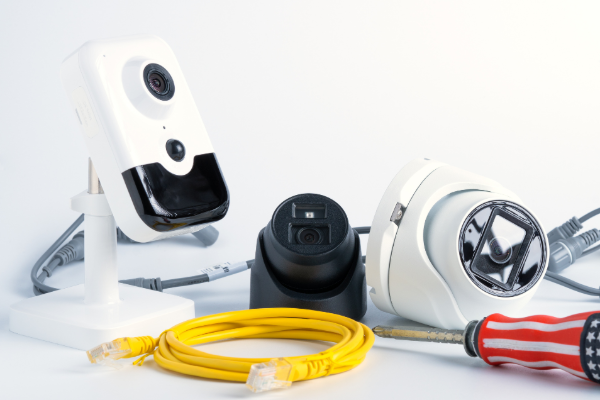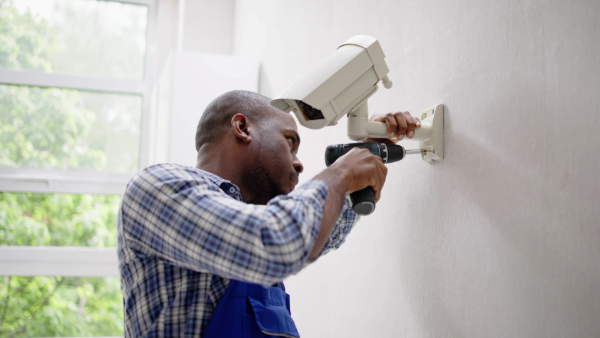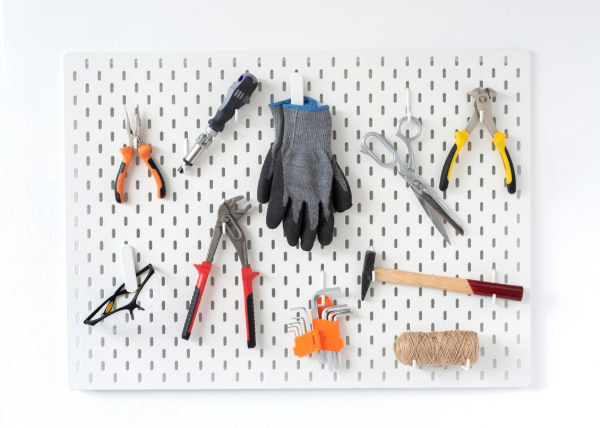DIY CCTV camera setup at home is a smart and cost-effective way to boost your home's security. Whether you choose a wired or wireless system, following the right installation steps ensures your cameras work efficiently. This guide will walk you through the step-by-step process to successfully install your own CCTV system at home.

The Step-by-Step Process of Installing a CCTV Camera.
1. Gather the Necessary Equipment
Before installation, make sure you have the following equipment:
- CCTV cameras (wired or wireless)
- DVR/NVR recorder
- Power supply or PoE switch (for IP cameras)
- Cables (coaxial, Ethernet, or power cables)
- Monitor
- Mounting brackets and screws
- Drill and screwdriver
- Network router (for remote access)
2. Plan the Camera Placement
Strategic camera placement ensures effective monitoring. Consider the following:
- Entry points: Install cameras near doors, windows, and gates.
- High-risk areas: Cover cash registers, parking lots, and storage areas.
- Lighting conditions: Ensure the area has adequate lighting or use infrared (IR) cameras for night vision.
- Height and angle: Position cameras high enough to prevent tampering but within range for clear footage.
3. Install the Cameras
Wired Cameras:
- Mount the camera on a stable surface using screws and brackets.
- Run the necessary cables (power and video) to the DVR/NVR.
- Secure and conceal cables to prevent damage or tampering.
Wireless Cameras:
- Mount the camera at the desired location.
- Connect to a power source (unless battery-operated).
- Ensure a stable Wi-Fi connection for continuous streaming.
4. Connect the System
For Wired Systems:
1. Connect cameras to the DVR/NVR using coaxial or Ethernet cables.
2. Plug the DVR/NVR into a power source and a monitor.
For Wireless Systems:
1. Connect cameras to the network router.
2. Pair cameras with the NVR and configure wireless settings.
5. Configure the Software and Network Settings
- Install and set up the CCTV software on your computer or mobile device.
- Configure motion detection, recording schedules, and storage settings.
- Set up remote access using a mobile app or web browser.
6. Test the System
- Check camera angles and adjust if necessary.
- Test video quality, night vision, and motion detection.
- Verify remote viewing access.
7. Secure and Maintain the System
- Regularly clean camera lenses to maintain clarity.
- Update software and firmware for security improvements.
- Ensure cables and connections are intact and free from damage.

Best Places to Install CCTV Cameras at Home
Choosing the right locations to install your CCTV cameras can significantly improve your home security. Here are the most recommended spots:
1. Front Door
Around 34% of burglars use the front door to enter a home. Installing a camera here helps you monitor who comes and goes.
2. Back and Side Doors
These are often overlooked entry points. A camera facing these doors can catch anyone trying to enter from less visible angles.
3. Garage and Driveway
Placing a camera here allows you to keep an eye on your vehicles, tool storage, and anyone approaching from the street.
4. Ground-Floor Windows
These windows can be tempting targets for intruders. Cameras facing them serve as a strong deterrent and provide vital footage if needed.
5. Backyard or Garden
Cameras in these areas help you monitor outdoor activity and any movement near the perimeter of your property.
Strategically placing your cameras in these key areas ensures maximum coverage and improved safety for your home.
How to Install Outdoor CCTV Cameras Without Drilling
If you prefer not to drill holes in your walls or outdoor structures, here are several effective ways to mount your outdoor CCTV cameras without drilling:
1. Strong Adhesive Tapes (e.g., 3M VHB)
Ideal for lightweight cameras and smooth surfaces like tiles or brick walls.
2. Clamp or Clip Mounts
Great for mounting on railings, fences, or window frames without permanent alterations.
3. Zip Ties (Cable Ties)
Useful for attaching cameras to pipes, poles, or fences with no tools required.
4. Magnetic Mounts
Perfect if you're installing on a metal surface. Magnetic bases offer strong hold and easy repositioning.
5. Over-the-Door Hooks or Mounts
These allow you to hang cameras on doors or window sills securely, with no drilling necessary.
These non-invasive installation options let you enjoy full outdoor surveillance without damaging your property or violating rental agreements.
Tools Needed to Install a CCTV System
Basic Tools (For DIY Installations)
| Tool |
Purpose |
| Screwdriver |
To mount cameras and attach brackets to walls or ceilings. |
| Power Drill |
For drilling holes to fix mounts and route cables. |
| Ladder |
To reach high spots like ceilings or roof eaves. |
| Measuring Tape |
For accurate camera placement and cable measurements. |
| Wire Cutter/Stripper |
To cut and strip power or signal cables. |
| Cable Clips or Zip Ties |
To secure cables neatly along walls or ceilings. |
| Extension Cord |
To power tools or connect cameras temporarily during setup. |

Optional Tools (For Advanced or Professional Installations)
| Tool |
Purpose |
| Monitor or Smartphone App |
To preview camera angles in real-time during installation. |
| Cable Tester |
To check the integrity of coaxial or Ethernet cables. |
| Multimeter |
To measure voltage and test power connections. |
| Electric Screwdriver |
To speed up the mounting process for multiple cameras. |
| Computer or Laptop |
To configure DVR/NVR settings and camera network setup. |
FAQ – CCTV Installation
Q: Can I install a CCTV camera system by myself?
A: Yes, most modern CCTV camera kits are designed for easy DIY installation. With basic tools and this guide, you can set it up at home without professional help.
Q: What tools do I need to install a CCTV camera?
A: Common tools include a power drill, screwdriver, ladder, cable clips, and possibly a monitor or smartphone for testing the feed.
Q: How much does it cost to install CCTV at home in 2025?
A: The cost ranges from $100 to $500 depending on the number of cameras, type (wired or wireless), and whether you're doing it yourself or hiring a pro.
Q: Can I install a CCTV camera without internet?
A: Yes. While internet is needed for remote viewing, most DVR-based systems can record and store footage locally without being online.
Recommended Reading
Setting up your CCTV system is only the beginning—choosing the right type of camera and ensuring compatibility with your recorder is equally important. Check out these related articles to continue building your ideal home security setup:
👉 What Types of CCTV Cameras are Compatible with NVR?
Understand which camera types work best with NVR systems, including IP cameras, PoE options, and hybrid models.
👉 Bullet Camera vs. Dome Camera: Which One is Best for You?
Explore the pros and cons of bullet and dome cameras so you can choose the best fit for your specific surveillance needs.
Conclusion
Installing a CCTV system requires careful planning and execution to ensure effective security monitoring. By following these steps, you can set up a reliable surveillance system for your property. Proper maintenance and system checks will help keep your CCTV cameras functioning optimally for years to come.
If you are unsure about the installation process or need a more complex setup, hiring a professional CCTV installer can be a great option. Experts can ensure proper placement, secure wiring, and system optimization, helping you avoid technical issues and maximize security coverage.
For professional assistance, feel free to Contact Us to get expert advice and installation services tailored to your needs.
